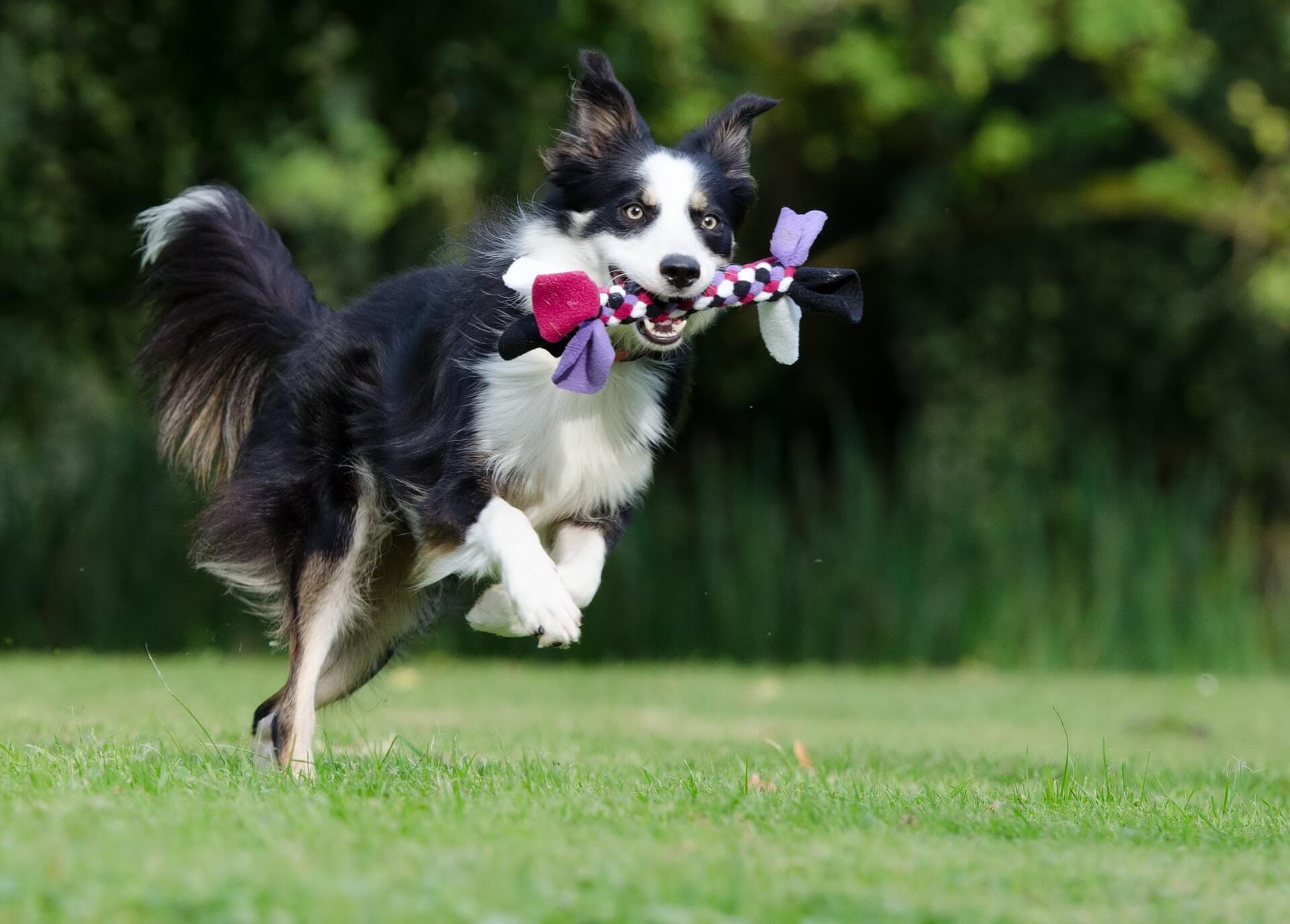Have you ever wondered if you could train your Border Collie to be an Emotional Support Animal? It’s a great question, and the answer is yes! In this article, we will discuss everything you need to know about training your beloved Border Collie to provide emotional support. From understanding the traits of a Border Collie to specific training techniques, we’ve got you covered. So, if you’re looking for a four-legged companion that can offer comfort and help you navigate through life’s challenges, keep reading to learn more!
First things first, let’s talk about Border Collies and their unique traits. Border Collies are known for their intelligence, sensitivity, and high energy levels. These characteristics make them excellent candidates for emotional support training. Their ability to learn quickly and their natural inclination to bond with their humans make them great at providing emotional support. With proper training and guidance, your Border Collie can become your loyal emotional companion. In the next sections, we will delve into the specific training techniques to help you and your Border Collie excel in this role. So, if you’re ready to embark on this journey of training your Border Collie to be an Emotional Support Animal, let’s dive in!

Understanding Emotional Support Animals
What are Emotional Support Animals?
Emotional Support Animals (ESAs) are animals that provide comfort, companionship, and a sense of emotional well-being to individuals with mental or emotional conditions. Unlike service animals, which are specifically trained to perform tasks for individuals with disabilities, ESAs provide support simply by being present.
The Role of Emotional Support Animals
ESAs play a crucial role in the emotional well-being of individuals who experience mental or emotional challenges. They provide a sense of security, reduce anxiety and stress, and offer unconditional love and companionship. By having an ESA, individuals often experience improved mood, increased happiness, and a greater sense of connection.
Benefits of Emotional Support Animals
The benefits of having an Emotional Support Animal are numerous. Some key benefits include:
-
Emotional Support: ESAs provide emotional support to individuals, helping them manage anxiety, depression, and other mental health conditions.
-
Reduced Stress: The presence of an ESA can help reduce stress and promote a calm and relaxed state of mind.
-
Improved Mood: Interacting with an ESA has been shown to increase endorphin and oxytocin levels, leading to improved overall mood.
-
Increased Social Interaction: ESAs can help individuals overcome social barriers and encourage social interaction with others.
-
Sense of Purpose: Taking care of an ESA gives individuals a sense of responsibility, purpose, and structure in their lives.
Choosing a Border Collie as an Emotional Support Animal
Why Border Collies Make Great Emotional Support Animals
Border Collies make excellent Emotional Support Animals due to their intelligence, loyalty, and gentle disposition. Some of the specific qualities that make them ideal for this role include:
-
Intelligence: Border Collies are highly intelligent and quick learners, making them easily trainable for emotional support tasks.
-
Sensitivity: These dogs are naturally attuned to their owner’s emotions and can sense when they are feeling stressed or anxious. They provide comfort and reassurance during those times.
-
Active yet Calm: Border Collies have a good balance of energy, making them highly adaptable to various living environments. They are equally happy going for walks or cuddling up on the couch.
Considerations for Selecting a Border Collie
Before selecting a Border Collie as an Emotional Support Animal, it is important to consider the following factors:
-
Time Commitment: Border Collies require a significant amount of physical exercise and mental stimulation. Ensure that you have enough time and resources to meet their needs.
-
Living Situation: Border Collies thrive in environments with ample space to run and play. They may not be suitable for small apartments or homes without a backyard.
-
Training and Socialization: Border Collies benefit from early training and socialization to ensure they can adapt well to different situations and environments.
Finding a Border Collie for Emotional Support
When looking for a Border Collie for emotional support, consider adopting from a rescue organization or reputable breeder. Take the time to meet the dog and assess their temperament and compatibility with your needs. It is important to choose a Border Collie that is well-suited for the role of an Emotional Support Animal.
Preparing Your Border Collie for Emotional Support Training
Establishing a Bond with Your Border Collie
Building a strong bond with your Border Collie is essential for successful emotional support training. Spend quality time with your dog, engage in play, and establish routines that create a sense of trust and companionship.
Basic Obedience Training
Before starting emotional support training, ensure your Border Collie has a solid foundation in basic obedience commands such as sit, stay, come, and leash manners. This will provide a framework for more advanced training.
Socializing Your Border Collie
Socializing your Border Collie is crucial to their development as an Emotional Support Animal. Expose them to different environments, people, and animals in a positive and controlled manner. This will help them feel at ease in various social situations.
Building Trust and Confidence
To prepare your Border Collie for emotional support training, focus on building their trust and confidence. Gradually expose them to new experiences and reward them for calm and positive behavior. This will help them navigate potentially stressful situations with ease.
Emotional Support Training Techniques for Border Collies
Positive Reinforcement Training
Positive reinforcement training is highly effective for Border Collies. Use rewards such as treats, praise, and play to reinforce desired behaviors. This will motivate and encourage your dog to continue to exhibit the desired emotional support behaviors.
Desensitization and Counterconditioning
If your Border Collie exhibits anxiety or fear in certain situations, desensitization and counterconditioning techniques can be useful. Gradually expose them to the trigger while giving them positive experiences and rewards to create a new positive association.
Managing Anxiety and Stress in Your Border Collie
Border Collies can be sensitive to their owners’ emotions and may experience anxiety or stress themselves. It is important to create a calm and safe environment for your dog to help them manage these emotions. Provide them with a designated space where they can relax and decompress.

Teaching Emotional Support Behaviors to Your Border Collie
Recognizing and Responding to Emotional Distress
Train your Border Collie to recognize and respond to signs of emotional distress in their owner. This may include pawing, nudging, or providing physical comfort by lying close to the person.
Alerting and Comforting Techniques
Teach your Border Collie specific alerting and comforting techniques, such as bringing a toy or blanket when sensing their owner’s distress. Reinforce these behaviors with positive rewards to encourage them.
Coping Strategies for Your Border Collie
Help your Border Collie develop coping strategies for dealing with their own stress or anxiety. Provide them with interactive toys, puzzle games, and designated quiet spaces where they can retreat and relax when needed.
Certifying Your Border Collie as an Emotional Support Animal
Understanding the Legal Requirements
Unlike service animals, Emotional Support Animals do not require certification or specific training. However, it is important to understand the legal rights and responsibilities associated with having an ESA, such as housing and transportation accommodations.
Documentation and Registration Process
To establish your Border Collie as an ESA officially, you may need documentation from a mental health professional. This documentation will outline your need for an emotional support animal and may be required for certain accommodations.
Working with a Professional
Consulting with a professional dog trainer or animal behaviorist can be helpful in navigating the process of certifying your Border Collie as an Emotional Support Animal. They can provide guidance and support throughout the training and certification process.

Maintaining the Emotional Support Role of Your Border Collie
Consistency in Training and Reinforcement
Maintain consistency in training and reinforcing emotional support behaviors with your Border Collie. Regular practice and reinforcement of desired behaviors will help solidify their role as an Emotional Support Animal.
Continuously Assessing Your Border Collie’s Well-being
Pay attention to your Border Collie’s overall well-being and emotional state. Regularly assess their behavior, stress levels, and overall happiness. Make adjustments to their training and routine as needed.
Sharing Responsibilities with Other Caregivers
If multiple individuals are involved in caring for your Border Collie, ensure that everyone is on the same page regarding their emotional support training. Consistency in training methods and reinforcement will help maintain their emotional support role.
Addressing Challenges in Training an Emotional Support Border Collie
Separation Anxiety and Attachment Issues
Border Collies can develop separation anxiety or attachment issues if not properly trained and supported. Gradual desensitization to being alone and providing them with mental stimulation when separated can help alleviate these issues.
Overstimulation and High Energy Levels
Border Collies are known for their high energy levels, which can sometimes lead to overstimulation. Provide them with plenty of physical exercise and mental stimulation to prevent excessive energy and help them remain calm and focused.
Dealing with Unexpected Triggers
As an Emotional Support Animal, your Border Collie may encounter unexpected triggers that can cause stress or anxiety. By building their resilience through training and socialization, you can help them navigate and cope with these triggers.

Interacting with Your Emotional Support Border Collie in Public
Access Rights and Public Etiquette
Learn about the rights and regulations regarding accessing public spaces with an Emotional Support Animal. Follow proper etiquette, such as ensuring your Border Collie is well-behaved and under control in public settings.
Preparing Your Border Collie for Public Settings
Gradually expose your Border Collie to various public settings and gradually increase the level of distractions. This will help them become comfortable and well-behaved in different environments.
Educating Others about Emotional Support Animals
Be an advocate for emotional support animals by educating others about their role and purpose. Help dispel misconceptions and promote understanding and acceptance of ESAs.
Additional Support and Resources for Emotional Support Border Collie Owners
Support Groups and Online Communities
Joining support groups or online communities for Emotional Support Border Collie owners can provide valuable advice, tips, and emotional support. These platforms allow you to connect with others who share similar experiences and challenges.
Therapy and Counseling Options
In addition to having an Emotional Support Animal, consider other therapy and counseling options to support your mental and emotional well-being. Professional guidance can complement the support provided by your Border Collie.
Further Reading and References
Further educate yourself about Emotional Support Animals and Border Collies by exploring books, articles, and reputable online resources. These materials can provide additional insights and guidance for training and maintaining your Border Collie’s emotional support role.

Recognizing the Limitations of an Emotional Support Border Collie
Differentiating Emotional Support from Service Animals
It is important to understand the distinction between an Emotional Support Animal and a Service Animal. Service animals receive specialized training to perform tasks for individuals with disabilities, while emotional support animals provide comfort and companionship.
Understanding Your Border Collie’s Individual Needs
While Border Collies make great Emotional Support Animals, it is essential to recognize and address their individual needs. Every dog has unique personality traits and requirements, so adjust your training and support accordingly.
Importance of Professional Guidance
Seek advice and guidance from professionals such as dog trainers, behaviorists, or veterinarians when needed. They can provide expert assistance in addressing specific challenges or concerns related to your Border Collie’s emotional support training.
Assessing the Effects of Emotional Support Training on Your Border Collie
Evaluating Behavioral Changes
Observing and evaluating any behavioral changes in your Border Collie can be a useful indicator of the effectiveness of their emotional support training. Look for signs of increased responsiveness, calmness, and overall well-being.
Measuring Increased Emotional Well-being
Assess your own emotional well-being, as well as the impact your Border Collie has on your mental health. Monitor changes in your mood, stress levels, and overall sense of emotional well-being since having your emotional support animal.
Success Stories and Testimonials
Share your success stories and testimonials about the positive impact your Border Collie has had on your emotional well-being. This can inspire and encourage others who are considering a Border Collie as an Emotional Support Animal.
Conclusion
Summary of Emotional Support Training for Border Collies
Training a Border Collie to be an Emotional Support Animal requires time, dedication, and patience. By establishing a bond, providing training, and teaching specific emotional support behaviors, you can create a strong partnership with your Border Collie that enhances your emotional well-being.
Commitment and Rewards of Having an Emotional Support Dog
The commitment to training and maintaining an Emotional Support Border Collie is well worth the rewards. The love, companionship, and emotional support they provide can make a significant difference in your life, helping you navigate challenges and promoting your overall well-being.
